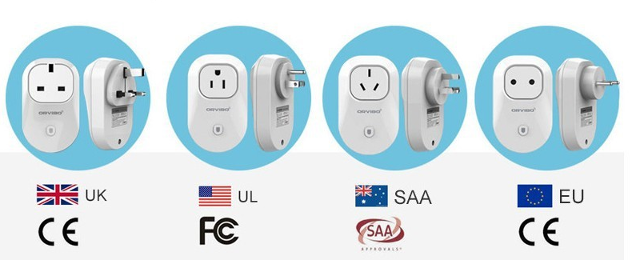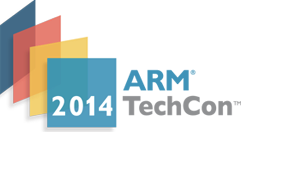Cloud Media (Syabas) is better known for their Linux based “Popcorn Hour” media players, and last year I reviewed their FreeOTT streaming media player powered by a Cavium ARM11 processor. The company is now entering the home automation market with the STACK Box (aka XuanBox) also powered by a Cavium ARM11 processor, and supporting various connectivity options to interface with popular smart “things” such as Belkin Wemo and Philips Hue, as well as a Raspberry Pi Bus (26-pin header) to support add-ons. STACK Box specifications: Processor – Cavium ARM11 processor @ 640 MHz (possibly Cavium CELESTIAL CNC1800L. TBC) System Memory – 256MB DDR3 Storage – 512 MB flash + SD card slot Connectivity 10/100M Ethernet Wi-Fi 802.11n with WPS Bluetooth LE 4.0 (included) Z-Wave (included) Dust Networks (extra module required) XBee (extra module required) X10 (extra module required) Insteon (extra module required) RF433/315 (coming soon) EnOcean (coming soon) ZigBee(coming soon) DCLink(coming […]
Vigekwear is a Modularized, Open source, Wearable BLE Development Kit (Crowdfunding)
[Update: Atomwear has been renamed to Vigekwear due to (Intel’s) copyrights infringement]. Giayee is a company mainly manufacturing Android tablets, thin clients, and mini PCs, but their latest product, called Atomwear, is a Bluetooth Low Energy (BLE) development kit based on Nordic nRF51822 chipset that comes with various modules such as battery charger, accelerometer, gyroscope, OLED display, heart rate monitor, etc… which connect together via 24-pin connector on a standard rigid baseboard or a flexible printed circuit (FPC). All modules are connected via the same 24-pin connector with power, I2C, SPI, UART, ADC, and GPIOs signals. The baseboard and FPC both contain 6 such connectors connected in parallel for up to 6 modules, and two baseboard can be connected together via a bridge circuit to accept more modules. The minimum configuration is with a BLE MCU module, and a power module. The different boards and modules are listed as follows: […]
Emcraft Systems Introduces IoT Devkit with LCD Display Powered by Freescale Vybrid VF6 SoC
Emcraft Systems has launched a IoT development kit based on on their Freescale Vybrid VF6 SoM featuring MVF61 SoC with a Cortex A5 MPU and a Cortex M4 MCU, and connected to a baseboard (IOT-BSB-EXT) with various connectors (USB, Ethernet, …) as well as a 4.3″ LCD (480×272 resolution) with touchscreen. The kit targets IoT gateway applications where a GUI (Graphical User Interface) and/or HMI (Human Machine Interface) are required. Vybrid IoT devkit specifications: SoC/Memory/Storage – Via Vybrid VF6 SoM with Freescale MVF61NN151CMK50 (No Security), or Freescale MVF61NS151CMK50 (with Security), 128 MB DDR3, Up to 512 MB NAND Flash, and 32 MBytes dual QSPI Flash Storage on Baseboard – micro SD card slot Display – 4.3″ 480×272 LCD with touch panel connected to the back side of the baseboard. Connectivity – 10/100M Ethernet USB – 2x micro USB OTG ports, 1x micro USB for debugging and/or power Debugging – 20-pin […]
Orvibo Wiwo S20 Wi-Fi Smart Socket Features US, EU, UK, or AU Plug Types
I’ve previously covered several Chinese Wi-Fi smart sockets including Broadlink SP2 also supporting power monitoring, and Kankun KK-SP3, a cheaper, more basic version that can only be turned on and off manually or via timers, and which runs OpenWRT. These plugs have one thing in common: they only come with Australian/Chinese plugs, so if you want to use them in Europe, the US, or United Kingdom, you’ll need an adapter, which may not the the safest things to do, and it’s also inconvenient. Orvibo Wiwo S20 is another model that appears to have the capabilities and a price similar to Broadlink SP2, but available in four flavors with US, EU, UK, and AU plug types. Orvibo Wiwo S20 is made of fireproof ABS, and is significantly smaller than Broadlink SP2, but the rest of the specifications are very similar: Material – ABC 94V-0 (fireproof) Wi-Fi 802.11 b/g/n Security – WEP, […]
littleBits CloudBit Wi-Fi Module Simplifies DIY IoT Designs
littleBits Electronics is a company selling tiny modules that snap together with tiny magnets for prototyping called… littleBits. They do not require soldering, wiring, or programming, can be buttons, sensors, motors, etc…, and are the electronics equivalent of LEGO, and are suitable to 8 years old and older kids. The company have recently launched a new product called CloudBit, a module based on Freescale i.MX233 with Wi-Fi connectivity meant to be used/snapped with existing littleBits. CloudBit hardware specifications: Processor – Freescale i.MX233 ARM926EJ-S processor @ 454MHz System Memory – 64MB of RAM; Storage – microSD slot with included 4GB micro SD card pre-loaded with a customized Arch Linux ARM distribution Connectivity – 802.11b/g Wi-Fi via included USB dongle USB – micro USB port (for power only) Connectors – 2x BitSnap connectors for LittleBits connectivity using i.MX233 ADC/DAC signals Debugging – Pads for UART (3.3V, 8-N-1, 115,200 baud) to access the […]
Kankun KK-SP3 Wi-Fi Smart Socket Hacked, Based on Atheros AR9331, Running OpenWRT
Kankun KK-SP3 is a $20 Wi-Fi smart socket that can be controlled via iOS and Android app. But one person created a Kankun community on Google+ to try to hack the device and control it from a PC, or from outside the home network for example. Up to now, the device has been opened, found to run OpenWRT, and one the member wrote a Windows app to control the socket from a PC. It is a basic smart socket, without power monitoring capabilities, and unless you start hacking the hardware, all you can do is basically turn it on and off. The device is based on Qualcomm Atheros AR9931, found in many low cost routers supporting OpenWRT, and the socket indeed runs OpenWRT, which you can access via SSH or Telnet (username/password: root/admin). There’s 32MB RAM (Winbond W9425G6JH), and a 10A OMRON relay. The smart socket actually communicates with the […]
Immedia Blink Battery Powered HD Security Camera Lasts Over One Year on Batteries (Crowdfunding)
There are plenty of security systems with IP cameras selling on the market, but they can be a pain to install because you need to use long power cables or use power extensions. There are battery-free such as NETGEAR VueZone Home Video Monitoring System that cost $259 with 6-month battery life for normal usage, and $50 yearly subscription fee. Immedia Semi is providing an alternative with Blink, a wire-free (wireless + battery) HD Home Monitoring & Alert System that starts at $69 with one camera, and is said to last over one year powered by two CR123 batteries, without monthly fees, and can stream live views and video recordings to your Android or iOS smartphone or tablet, or any web browser. The one-year battery claim seems preposterous. How is that possible? The first reason it’s possible is because of the way typical usage is defined for home security cameras. They […]
ARM TechCon 2014 Schedule – 64-Bit, IoT, Optimization & Debugging, Security and More
ARM Technology Conference (TechCon) 2014 will take place on October 1 – 3, 2014, in Santa Clara, and as every year, there will be a conference with various sessions for suitable engineers and managers, as well as an exposition where companies showcase their latest ARM based products and solutions. The detailed schedule for the conference has just been made available. Last year, there were 90 sessions organized into 15 tracks, but this year, despite received 300 applications, the organizers decided to scale it down a bit, and there will be 75 session in the following 11 tracks: Chip Implementation Debugging Graphics Heterogeneous Compute New Frontiers Power Efficiency Safety and Security Software Development and Optimization Software Optimization for Infrastructure and Cloud System Design Verification There are also some paid workshops that take all day with topics such as “Android (NDK) and ARM overview”, “ARM and the Internet of Things”, or “ARM […]










